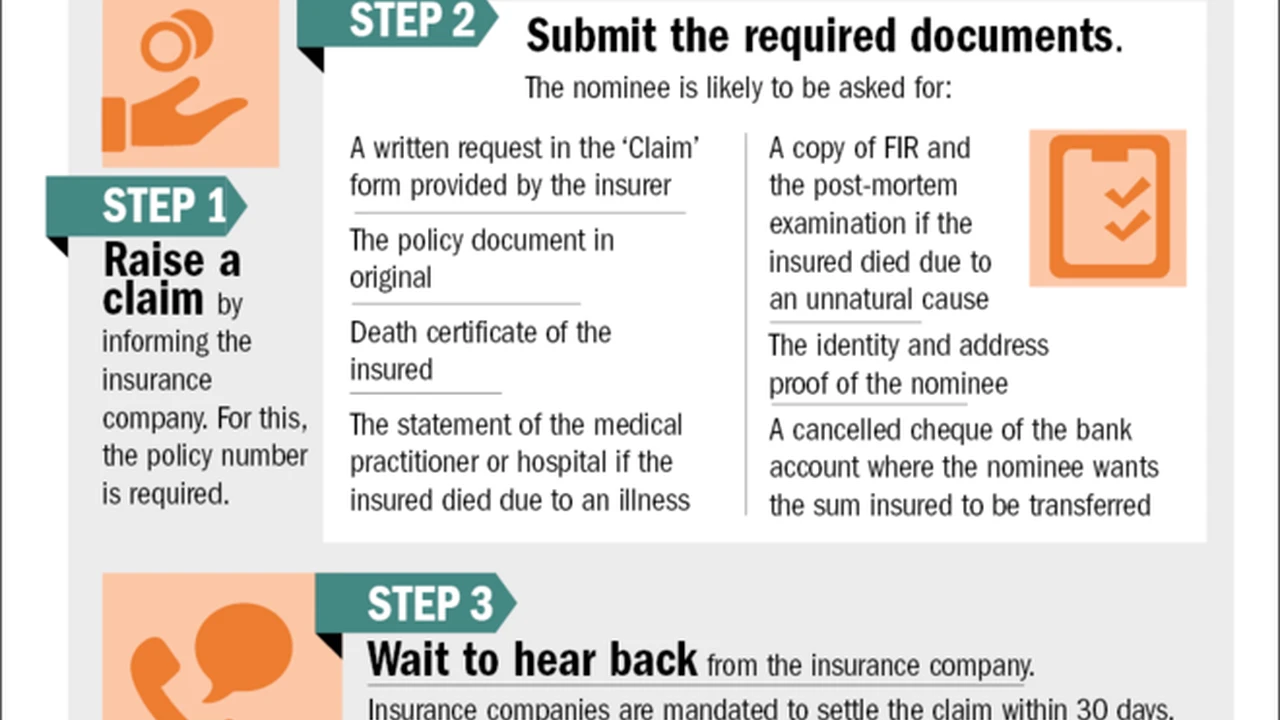Life Insurance and Business Succession Planning

Understanding Business Succession Planning and Life Insurance
Business succession planning is a critical process for ensuring the smooth transition of ownership and leadership in a company, particularly in the event of the owner's retirement, disability, or death. It's about more than just handing over the reins; it's about preserving the value of the business, minimizing disruption, and protecting the interests of all stakeholders, including employees, customers, and family members.
Life insurance plays a vital role in business succession planning by providing the necessary funding to facilitate the transfer of ownership. It can be used to buy out a deceased owner's shares, fund a buy-sell agreement, or provide liquidity to pay estate taxes. Without adequate life insurance coverage, a business may be forced to sell assets, take on debt, or even liquidate to meet its financial obligations.
The intersection of life insurance and business succession planning is where financial security meets strategic continuity. It's about creating a plan that not only addresses the immediate needs of the business but also ensures its long-term viability and success.
Key Benefits of Integrating Life Insurance into Succession Plans
Integrating life insurance into your business succession plan provides a multitude of benefits. It's not just about the money; it's about peace of mind and a secure future for your business.
- Funding Buy-Sell Agreements: Life insurance provides the funds necessary to purchase a deceased owner's share of the business, ensuring a smooth transfer of ownership and preventing unwanted outsiders from gaining control.
- Providing Liquidity for Estate Taxes: Estate taxes can be a significant burden on a business, potentially forcing the sale of assets to cover the tax liability. Life insurance can provide the necessary liquidity to pay these taxes without disrupting the business operations.
- Protecting Business Value: The death of a key employee or owner can have a devastating impact on the value of a business. Life insurance can help mitigate this risk by providing funds to cover lost revenue, recruit and train replacements, and maintain customer relationships.
- Ensuring Business Continuity: A well-funded life insurance policy can provide the financial stability needed to ensure the business continues to operate smoothly during and after a transition of ownership.
- Attracting and Retaining Key Employees: Offering life insurance as part of a compensation package can attract and retain top talent, demonstrating a commitment to employee well-being and financial security.
Types of Life Insurance Policies for Business Succession
Choosing the right type of life insurance policy is crucial for achieving your business succession planning goals. Several types of policies are commonly used, each with its own advantages and disadvantages.
- Term Life Insurance: Term life insurance provides coverage for a specific period, typically 10, 20, or 30 years. It's generally the most affordable type of life insurance, making it a popular choice for businesses with limited budgets. However, it only pays out if the insured dies during the term of the policy.
- Whole Life Insurance: Whole life insurance provides lifelong coverage and includes a cash value component that grows over time. It's more expensive than term life insurance but offers the potential for tax-deferred growth and can be used as a source of financing for the business.
- Universal Life Insurance: Universal life insurance is a flexible policy that allows you to adjust the premium payments and death benefit within certain limits. It also includes a cash value component that grows based on current interest rates.
- Variable Life Insurance: Variable life insurance is a type of permanent life insurance that allows you to invest the cash value in a variety of investment options, such as stocks and bonds. This offers the potential for higher returns but also carries a higher level of risk.
- Second-to-Die Life Insurance (Survivorship Life): This policy covers two individuals (typically business partners or spouses) and only pays out upon the death of the second person. It's often used for estate planning purposes and can be an efficient way to fund estate taxes.
Specific Product Recommendations and Use Cases
Let's delve into some specific life insurance products that are well-suited for business succession planning, along with their ideal use cases.
Term Life Insurance for Short-Term Succession Needs
Product Recommendation: Protective Life Classic Choice Term
Use Case: A business owner in their 40s or 50s who anticipates retiring within the next 10-20 years. The term policy can provide coverage to fund a buy-sell agreement if the owner dies unexpectedly before retirement. The lower premiums of term life insurance make it an attractive option for businesses with tighter budgets.
Product Details: Protective Life Classic Choice Term offers level premiums for the chosen term, with various term lengths available (10, 15, 20, 25, 30 years). It's generally competitively priced and offers a simple application process.
Pricing: A 45-year-old male in excellent health can expect to pay around $50-$100 per month for a $1 million 20-year term policy.
Whole Life Insurance for Long-Term Succession and Cash Value Accumulation
Product Recommendation: New York Life Whole Life
Use Case: A family-owned business where the owner wants to ensure a smooth transition to the next generation and also build a cash value asset within the business. The cash value can be used for various purposes, such as funding business expansion or providing a source of retirement income.
Product Details: New York Life Whole Life is a participating whole life policy, meaning it pays dividends that can be used to increase the death benefit or cash value. It offers guaranteed death benefit and cash value growth, providing financial security and predictability.
Pricing: A 45-year-old male in excellent health can expect to pay around $800-$1200 per month for a $1 million New York Life Whole Life policy. The exact premium will depend on factors such as health, lifestyle, and policy riders.
Universal Life Insurance for Flexibility and Customization
Product Recommendation: Transamerica Financial Foundation IUL
Use Case: A business owner who wants flexibility in premium payments and death benefit options. The Indexed Universal Life (IUL) policy allows the cash value to grow based on the performance of a market index, such as the S&P 500, but with downside protection. This can be a good option for businesses that want to participate in market gains without the risk of losing principal.
Product Details: Transamerica Financial Foundation IUL offers a variety of index crediting strategies, allowing policyholders to customize their investment approach. It also offers flexible premium payments and death benefit options.
Pricing: The premium for a Transamerica Financial Foundation IUL policy will depend on the chosen index crediting strategy, death benefit amount, and other factors. It typically falls between the cost of term life and whole life insurance.
Second-to-Die Life Insurance for Estate Tax Planning
Product Recommendation: Lincoln WealthPreserve Survivorship IUL
Use Case: A business owned jointly by spouses where the primary goal is to provide liquidity to pay estate taxes after the death of the second spouse. This type of policy is particularly useful for businesses with significant assets that may be subject to estate taxes.
Product Details: Lincoln WealthPreserve Survivorship IUL is a second-to-die indexed universal life policy that provides a death benefit only after the death of both insured individuals. The cash value grows based on the performance of a market index, offering the potential for tax-advantaged growth.
Pricing: The premium for a Lincoln WealthPreserve Survivorship IUL policy will depend on the age and health of both insured individuals, the death benefit amount, and the chosen index crediting strategy. It's generally less expensive than purchasing two separate life insurance policies.
Product Comparison Table
| Product | Type of Policy | Key Features | Pros | Cons | Ideal Use Case |
|---|---|---|---|---|---|
| Protective Life Classic Choice Term | Term Life Insurance | Level premiums, various term lengths | Affordable, simple application process | Coverage expires at the end of the term | Short-term succession needs, budget constraints |
| New York Life Whole Life | Whole Life Insurance | Guaranteed death benefit and cash value growth, dividends | Lifelong coverage, cash value accumulation | Higher premiums | Long-term succession, cash value accumulation |
| Transamerica Financial Foundation IUL | Indexed Universal Life | Flexible premiums and death benefit, index crediting strategies | Potential for higher returns, downside protection | More complex than term or whole life | Flexibility, market participation |
| Lincoln WealthPreserve Survivorship IUL | Second-to-Die IUL | Death benefit paid upon the death of the second insured, index crediting strategies | Efficient for estate tax planning, lower premiums than two separate policies | Death benefit only paid after the death of both insureds | Estate tax planning for jointly owned businesses |
Detailed Information on Policy Riders and Options
Life insurance policies often come with optional riders that can enhance the coverage and provide additional benefits. Here are some common riders that may be relevant for business succession planning:
- Accelerated Death Benefit Rider: This rider allows you to access a portion of the death benefit if the insured is diagnosed with a terminal illness. This can provide funds to cover medical expenses or other needs during a difficult time.
- Waiver of Premium Rider: This rider waives the premium payments if the insured becomes disabled and unable to work. This can help ensure the policy remains in force even during a period of financial hardship.
- Accidental Death Benefit Rider: This rider pays an additional death benefit if the insured dies as a result of an accident.
- Guaranteed Insurability Rider: This rider allows you to purchase additional life insurance coverage at specified intervals without having to provide evidence of insurability. This can be useful for businesses that anticipate needing more coverage in the future.
- Business Loan Protection Rider: This rider provides a death benefit that can be used to pay off outstanding business loans in the event of the insured's death.
It's important to carefully consider the available riders and choose those that best meet the specific needs of your business.
Navigating the Legal and Tax Implications
The intersection of life insurance and business succession planning involves complex legal and tax considerations. It's crucial to consult with legal and tax professionals to ensure that your plan is structured in a way that minimizes taxes and complies with all applicable laws and regulations.
Here are some key legal and tax issues to consider:
- Buy-Sell Agreements: A well-drafted buy-sell agreement is essential for ensuring a smooth transfer of ownership. The agreement should specify the purchase price, the terms of payment, and the triggering events that will activate the agreement.
- Estate Taxes: Life insurance proceeds may be subject to estate taxes. It's important to understand the estate tax laws in your jurisdiction and to structure your plan in a way that minimizes the tax liability.
- Gift Taxes: Transferring ownership of life insurance policies may be subject to gift taxes. It's important to consult with a tax advisor to determine the potential gift tax implications of your plan.
- Income Taxes: The tax treatment of life insurance premiums and death benefits can vary depending on the specific circumstances. It's important to understand the income tax implications of your plan and to structure it in a way that minimizes your tax burden.
Case Studies and Real-World Examples
Let's examine a couple of case studies to illustrate how life insurance can be effectively used in business succession planning.
Case Study 1: The Family-Owned Manufacturing Business
John and Mary own a successful manufacturing business that they want to pass on to their two children, Sarah and David. They want to ensure that both children are actively involved in the business and that the transition is fair to all parties. They decide to implement a buy-sell agreement funded with life insurance.
John and Mary purchase a second-to-die life insurance policy on their lives. The policy will pay out a death benefit to the business upon the death of the second spouse. The buy-sell agreement specifies that the death benefit will be used to purchase the shares of the deceased spouse from their estate. Sarah and David will then own equal shares of the business.
This plan ensures that the business remains in the family and that both children have an equal opportunity to participate in its success. It also provides liquidity to pay estate taxes and avoids potential conflicts among the heirs.
Case Study 2: The Partnership with Key Employees
Tom, Lisa, and Mark are partners in a thriving technology company. They recognize the importance of having a succession plan in place to protect the business in the event of the death or disability of one of the partners. They decide to implement a cross-purchase buy-sell agreement funded with life insurance.
Each partner purchases a life insurance policy on the other two partners. The buy-sell agreement specifies that if one partner dies, the remaining partners will use the life insurance proceeds to purchase the deceased partner's shares of the business. This ensures that the remaining partners retain control of the business and that the deceased partner's estate receives fair compensation for their shares.
This plan provides financial security for the partners and their families, while also ensuring the long-term continuity of the business.
Finding the Right Advisor and Implementing Your Plan
Implementing a successful business succession plan requires the expertise of qualified professionals. It's important to work with a team of advisors, including a financial advisor, an attorney, and a tax advisor, to develop a plan that meets your specific needs and goals.
Here are some tips for finding the right advisor:
- Seek Referrals: Ask your friends, family, and business associates for referrals to qualified advisors.
- Check Credentials: Make sure the advisor is properly licensed and has the necessary experience and expertise.
- Ask Questions: Don't be afraid to ask the advisor questions about their qualifications, experience, and fees.
- Get a Second Opinion: It's always a good idea to get a second opinion before making any major financial decisions.
Once you've found the right advisor, work with them to develop a comprehensive business succession plan that addresses all of your needs and goals. Be sure to review the plan regularly and update it as needed to reflect changes in your business, your family, and the legal and tax landscape.
Future-Proofing Your Business Succession Strategy
The business landscape is constantly evolving, and your succession plan needs to adapt to these changes. Regularly reviewing and updating your plan is crucial for ensuring its continued effectiveness. Here are some factors to consider when future-proofing your business succession strategy:
- Changes in the Business: As your business grows and evolves, your succession plan needs to be updated to reflect these changes. Consider factors such as new products or services, expansion into new markets, and changes in the competitive landscape.
- Changes in Family Circumstances: Changes in your family circumstances, such as births, deaths, marriages, and divorces, can also impact your succession plan. Make sure your plan is updated to reflect these changes and to ensure that your wishes are carried out.
- Changes in the Legal and Tax Landscape: The legal and tax landscape is constantly changing, and your succession plan needs to be updated to reflect these changes. Consult with your attorney and tax advisor regularly to ensure that your plan is compliant with all applicable laws and regulations.
- Technology Advancements: The rapid pace of technological change can also impact your business succession plan. Consider how new technologies may affect your business and update your plan accordingly.
By regularly reviewing and updating your business succession plan, you can ensure that it remains effective and that your business is well-positioned for the future.
:max_bytes(150000):strip_icc()/277019-baked-pork-chops-with-cream-of-mushroom-soup-DDMFS-beauty-4x3-BG-7505-5762b731cf30447d9cbbbbbf387beafa.jpg)






